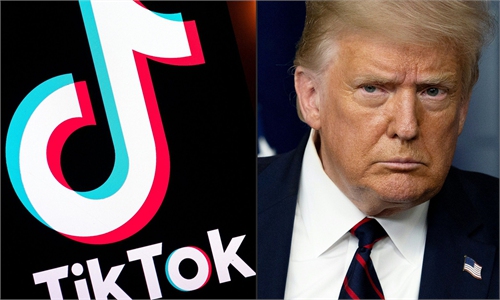 |
| Why millennials are flocking to real estate |
Interest rate cuts, govt incentives spur buying interests
“We believe the strong growth in our young buyers is both a natural evolution and as a result of a conscious strategic effort we have made to appeal to this important customer group,"-
Datuk Chang Khim Wah
Property developers are seeing a pick up in sales, especially from younger buyers, as the numerous interest rate cuts and government incentives have spurred buying interest.
Eco World Development Group Bhd president and chief executive officer Datuk Chang Khim Wah said the increase in younger buyers was due to a conscious strategic effort made by the group to appeal to this target market.
“During our initial years of operations (circa 2015) the percentage of young buyers (below 40 years old) was around 43% and today it is more than 70%.
“We believe the strong growth in our young buyers is both a natural evolution and as a result of a conscious strategic effort we have made to appeal to this important customer group, both through the products we are offering as well as the way in which we engage them via social media and digital channels, ” he told StarBiz.
Of the 70%, Chang said around 50% are in their 30s and the remaining 20% are in their 20s. “We are particularly happy that a good number of these buyers include children of our own customers and residents in the vicinity of our development. This validates our efforts over the last few years to make a strong pivot to serve the needs of this market segment and the wider M40 group.
“Our upcoming launch of the new Duduk series of vertical townships offering semi-furnished apartments priced below RM400,000 at Eco Ardence and Eco Sanctuary, as well landed homes starting from RM500,000 at Eco Botanic 2, will enable us to further capture the hearts and minds of this very important market segment.”
Chang said the prolonged movement control order (MCO) period has really made many young people realise that the quality of home and living environment matters greatly.
Mah Sing Group Bhd chief executive officer Datuk Ho Hon Sang (pic below) said as the bulk of its projects comprised units within the affordable range segment, the majority of its buyers comprised those below 35 years of age.
Despite the challenging market environment in view of the Covid-19 pandemic, Ho said demand continues to be resilient as property remained one of the safest forms of asset class for long-term capital protection and appreciation.
“Malaysia’s population is still very young with 66% below 40 years old and as such, household formation continues to be strong. Affordably-priced properties of good quality and at strategic locations remain highly sought after.
“This is especially for first-time home buyers, which augers well for Mah Sing’s product composition.”
Sunway Property said it is seeing increasing interest from younger buyers from 25 years to 35 years in its properties that are transit-oriented and have good facilities nearby.
“For example, our developments such as the transit-oriented Sunway Avila in Wangsa Maju, the integrated and transit-oriented Sunway Velocity TWO and the youth-focused development of Sunway Grid in Sunway Iskandar has seen enthusiastic response from younger purchasers, ” it said.
Property data, analytics and solutions provider MyProperty Data chief executive officer Thor Joe Hock said the median age for residential property transactions has gradually dropped over the years.
“When we look at the over 2.5 million residential property transactions, including serviced apartments, it appears that the median age of buyers from 2000 to 2019 has remained largely unchanged at between 34 to 35 years of age.
“However, when you break it down into landed and non-landed transactions, we start to get a clearer picture. The median age for non-landed properties has fallen from 40 years in 2000 to 28 years in 2019; while the median age for landed property purchasers marginally decreased from 40 years to 37 years over the same period.”
MyProperty Data manages a property data portal called PropertyAdvisor.
Meanwhile, Lagenda Properties Bhd managing director Datuk Jimmy Doh said more than half of its buyers are below 39 years of age.
“We believe as young people start new phases in their lives, for example getting a job or starting their own families, they prefer to stay independently and have their own space, granted that the properties are within their price range.
“Over the past few years, we have been seeing an increase in buyers. Our properties are priced below RM200,000, ” he said.
MIDF Research in a recent report said the aggressive overnight policy rate (OPR) cuts have improved home buyers’ purchasing power.
“Bank Negara cut its overnight policy rate for the fourth time this year by 25 basis points (bps) to a record low of 1.75% in July due to the severe impact of the Covid-19 pandemic on the global economy. The aggressive OPR cuts this year are positive to the sector as it improved home buyer’s purchasing power by reducing loan installments.
“We estimate monthly installments to reduce by 14%, after 125 bps cut for RM500,000 loan with a loan repayment period of 30 years, which is quite significant in our view. Hence, we think the record-low interest rate will partly help to alleviate home buyers’ issue of securing home financing, as the record low yield has boosted the affordability of home buyers.”
MIDF Research also said it expected loan demand to recover in the second half of 2020.
Citing Bank Negara’s statistics, it said total applied loan for the purchase of property improved sequentially by 52.9% month-on-month to RM13.1bil in May, after plunging by 64.8% month-on-month in April.
“Note that total applied loan recorded steep decline in April due to the disruption to business activity following the commencement of the MCO.
“Nevertheless, total applied loan in May was lower by 61.8% year-on-year while cumulative total applied loan in the first five months of 2020 was lower by 33.6% year-on-year, indicating buying interest was subdued.”
Looking ahead, the research house expected buying interest to recover in the second half of this year, spurred by incentives introduced by the government.
Under the Short-Term Economic Recovery Plan (Penjana), which was announced in June, the government reintroduced the Home Ownership Campaign (HOC). Under the HOC, stamp duty exemption will be provided on the transfer of property and loan agreement for the purchase of home priced between RM300,000 and RM2.5mil.
Source link
Related:
Related posts
‘It’s the right time to invest’
https://youtu.be/wT4fZ9IcR6c https://youtu.be/nzqy79-m8Z0 Extension for those in need | The Star Rapt attention: Laun...
( From left) Chow looking at the Penang NCER
human capital graphic info. With him are John, state executive
councillor Datuk Abdul Halim .




























